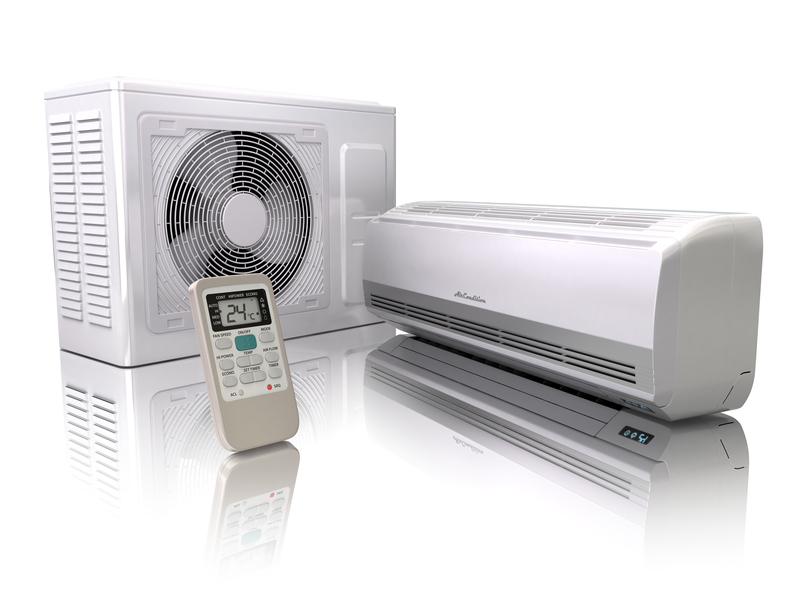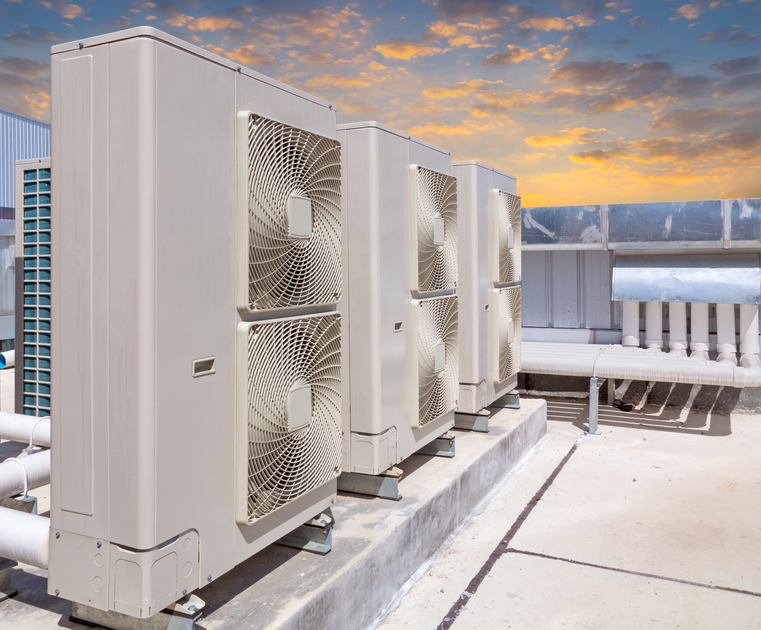HVAC Basics 15 PDH Discount Package 3
Heat Rejection Options in HVAC Systems (M04-029)
Selection Tips for Air Conditioning Systems (M04-026)
Selection Tips for Environmentally Safe Refrigerants (C02-026)

This online engineering PDH course provides an overview of psychrometrics and suggests how a better understanding of psychrometrics will improve air conditioning design and selection of equipment.
Psychrometry is the study of moist air. It is significant in terms of thermal comfort and is a major consideration in design of air conditioning systems. Air conditioning engineers use the psychrometric chart to predict changes in the environment when the amount of heat and/or water in the air changes. A psychrometric chart provides a convenient way to look at the air conditioning processes and it will answer why heated air can hold more moisture, and conversely, how allowing moist air to cool will result in condensation.
This 5 PDH online course is applicable to students, mechanical and HVAC engineers, process engineers, architects, building designers, contractors, energy auditors, facility managers who are interested in gaining a better understanding of psychrometrics.
This PE continuing education course is intended to provide you with the following specific knowledge and skills:
- Understand the basic terminology and definitions related to air properties
- Read psychrometric chart
- Describe relationship of 7 air properties: DBT, WBT, RH, dew point, absolute humidity, enthalpy and specific volume
- Apply the psychrometric charts on air-conditioning applications
- Understand how the various properties of air are measured
- Understand various psychrometric processes: sensible heating and cooling, cooling and dehumidification, evaporative cooling, heating and humidification and air mixing
- Understand the air conditioning processes for 4 extreme climatic conditions viz. Miami, Phoenix, Minneapolis and Seattle
- Understand the difference between sensible heat and latent heat
- Understand the terms sensible heat factor, room sensible heat factor and grand sensible heat factor
- Understand how to calculate the required volume air flow rate
- Understand how to compute the cooling coil capacity with example
- Understand standard equations used in air conditioning
In this professional engineering CEU course, you need to review the course document titled, "Air Conditioning Psychometrics".
Upon successful completion of the quiz, print your Certificate of Completion instantly. (Note: if you are paying by check or money order, you will be able to print it after we receive your payment.) For your convenience, we will also email it to you. Please note that you can log in to your account at any time to access and print your Certificate of Completion.

This online engineering PDH course provides a comprehensive description of the five prominent heat rejection methods as applicable to air conditioning systems.
One of the basic requirements of the air conditioning and refrigeration systems is to reject heat to the outdoors. Air conditioning chillers come in two different forms:
- An air-cooled chiller uses the flow of outside air across the condenser to remove or reject heat from the chiller. Air-cooled chillers typically have the condenser mounted on the roof or somewhere outside the facility while the evaporator can either be inside or outside the facility.
- Water-cooled chillers are typically 100 tons or greater and use water to remove the heat from the condenser. Water-cooled chillers are typically more efficient than air-cooled chillers. The condenser water is kept cool by a cooling tower, or water from the city main or well water is used. A water-cooled chiller will typically have the condenser and evaporator inside a facility while the cooling tower is located outside.
The range of chillers and associated heat rejection equipment is wide ranging.
This 4 PDH online course is applicable to architects, air-conditioning engineers, controls engineers, contractors, environmentalists, energy auditors and loss prevention professionals.
This PE continuing education course is intended to provide you with the following specific knowledge and skills:
- The concept of total heat of rejection (THR), its derivation and how it applies to the process of air conditioning
- Five prominent methods of heat rejection
- Importance of sub-cooling and super-heat in air-cooled condensers
- Types, rating and selection of air cooled condensers
- Operating principle of wet cooling towers
- Types of cooling towers, cross-flow, counter-flow, induced draft and forced draft
- Capacity control of air cooled and water cooled systems
- Closed circuit fluid coolers v/s evaporative condensers
- Energy performance of air-cooled chiller v/s water cooled systems
- Effectiveness of adiabatic cooling technology
- Benefits and limitations of various heat rejection methods
- The selection of appropriate method on capital costs and environment criteria
In this professional engineering CEU course, you need to review the document titled, “Heat Rejection Options in HVAC Systems”.
Upon successful completion of the quiz, print your Certificate of Completion instantly. (Note: if you are paying by check or money order, you will be able to print it after we receive your payment.) For your convenience, we will also email it to you. Please note that you can log in to your account at any time to access and print your Certificate of Completion.

This online engineering PDH course provides comprehensive information on the air-conditioning cooling systems. It details the type and characteristics of commonly used cooling systems with illustrations, advantages and disadvantages.
Heating, ventilating, and air conditioning (HVAC) of buildings is accomplished in many ways, depending on the size, configuration, and location of the buildings and the degree of environmental control needed. Small simple facilities can be cooled with a localized cooling unit whereas larger facilities employ several large units or centralized systems.
Air conditioning system types are broken down into two types: direct expansion (DX) systems, in which there is direct heat exchange between the building air and the refrigerant, and chilled water systems that utilize chilled water as an intermediate heat exchange medium to transfer heat from the building air to the refrigerant. It is useful to know what an ideal HVAC system would look like. Although compromises sometimes have to be made, they should be made with the knowledge of how and why they are imperfect.
This 4 PDH online course is applicable to HVAC engineers, facility engineers, architects, environmentalists, operations and maintenance personnel, as well as consultants and contractors who construct, build and manage facilities.
This PE continuing education course is intended to provide you with the following specific knowledge and skills:
- Learn the different types of cooling systems - DX and Chilled water systems
- Understand the efficiency terms and the rating of cooling systems
- Understand the key factors in the selection of DX systems, their advantages and limitations
- Understand the key factors in the selection of chilled water systems, their advantages and limitations
- Understand the key factors determining the heat rejection systems
- Describe five common methods of heat rejection with advantages and limitations
In this professional engineering CEU course, you need to review the document titled, "Selection Tips for Air Conditioning Systems" .
Upon successful completion of the quiz, print your Certificate of Completion instantly. (Note: if you are paying by check or money order, you will be able to print it after we receive your payment.) For your convenience, we will also email it to you. Please note that you can log in to your account at any time to access and print your Certificate of Completion.

This online engineering PDH course provides guidance on the responsible use and selection of refrigerants in vapor compression refrigeration systems. The thermodynamic efficiency of a refrigeration system depends mainly on its operating temperatures. However, important practical issues such as the system design, size, initial and operating costs, safety, reliability, and serviceability etc. depend very much on the type of refrigerant selected for a given application.
Due to several environmental issues such as ozone layer depletion and global warming and their relation to the various refrigerants used, the selection of suitable refrigerant has become one of the most important issues in recent times. Replacement of an existing refrigerant by a completely new refrigerant, for whatever reason, is an expensive proposition as it may call for several changes in the design and manufacturing of refrigeration systems. Hence it is very important to understand the issues related to the selection and use of refrigerants.
This 2 PDH online course is applicable to HVAC engineers, facility engineers, architects, environmentalists, operations and maintenance personnel, as well as consultants and contractors who construct, build and manage facilities.
This PE continuing education course is intended to provide you with the following specific knowledge and skills:
- Understanding the differences between primary and secondary refrigerants
- Understanding the phenomenon of ozone layer depletion and its relationship to various refrigerants
- Understanding the criteria used in refrigerant selection
- Understanding the thermo-physical, environmental and economic properties of refrigerants
- Understanding the numbering system used for designating refrigerants
- Understanding the international treaties and regulation in force on choice of refrigerants
- Understanding the available options for the replacements for CFCs and HCFCs
In this professional engineering CEU course, you need to review the course document titled "Selection Tips for Environmentally Safe Refrigerants".
Upon successful completion of the quiz, print your Certificate of Completion instantly. (Note: if you are paying by check or money order, you will be able to print it after we receive your payment.) For your convenience, we will also email it to you. Please note that you can log in to your account at any time to access and print your Certificate of Completion.